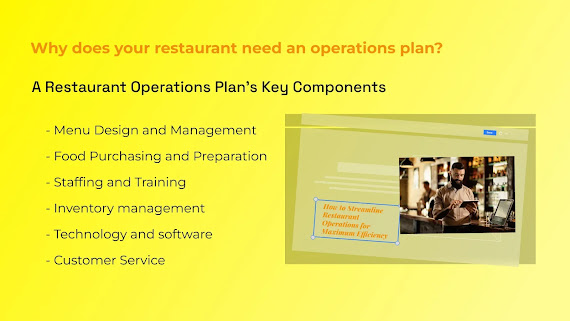The Definitive Guide to Restaurant POS Systems
Restaurants have numerous opportunities to provide an exceptional dining experience, from the moment guests arrive until they leave. These opportunities include maintaining a well-trained staff, ensuring efficient food preparation, and smooth restaurant operations.
To achieve this, a reliable and effective restaurant Point-of-Sale (POS) system can play a pivotal role. Such a system automates daily tasks, freeing up time for you to focus on delivering outstanding customer experiences. If you're unfamiliar with what a restaurant POS system entails, this blog post is tailored to provide you with insights.
Understanding a Restaurant POS System:
A POS system, short for Point-of-Sale, denotes the time and place at which a sales transaction is finalized. In the restaurant context, it encompasses both hardware and software responsible for managing functions like credit card processing and check printing.
Key Functions of a Modern Restaurant POS System:
Streamlines internal operations
Connects various restaurant personnel
Ensures the smooth flow of restaurant operations
Automatically tracks sales, labor, and inventory metrics
By fulfilling these functions, a POS system not only boosts restaurant revenue and profits but also enhances customer satisfaction. It reduces employee turnover, minimizes order errors, reduces wait times, and lowers overall stress levels.
A modern restaurant POS system typically consists of two components: Restaurant Hardware and Restaurant Software.
Restaurant POS Hardware:
Restaurant POS hardware is designed to handle the fast-paced environment of a restaurant. The central component is the POS terminal, often referred to as a touch screen cash register. It manages tasks such as food ordering, transmitting orders to the kitchen, processing customer payments, table management, and more. Some systems even provide handheld devices like POS tablets, enabling servers to send orders directly to the kitchen and accept payments, including tips, at the table. For restaurants that don't offer table service, these mobile tablets allow cashiers to take orders efficiently in line.
Restaurant POS Software:
Software is essential for running any POS hardware effectively. Restaurant POS software enhances both front-of-house (order processing, payments, and tips) and back-of-house (kitchen ticket management, detailed reporting, and inventory control) operations. It can run on various operating systems like Android, iOS, or Windows.
Why Restaurants Should Have a POS System:
There are several compelling reasons for restaurants to adopt a reliable POS system:
Streamlines operations, freeing up staff to focus on improving customer service.
Ensures greater accuracy in order processing and billing, reducing errors.
Enhances the overall customer experience by speeding up the ordering and payment processes.
Provides valuable business insights through real-time data on sales and customer preferences.
Facilitates better staff management, including scheduling and performance tracking.
Offers flexible floor plan adjustments to optimize front-of-house operations.
Supports takeout, delivery, and online ordering services, especially important in light of recent industry shifts.
Enables cashless and contactless payments, catering to changing customer preferences.
Allows management of multiple branches using a single system for scalability.
Enhances marketing strategies through data analysis and digital tools.
Choosing a Restaurant POS System:
Selecting the right restaurant POS system requires careful consideration, as there is no one-size-fits-all solution. Research various options, read POS reviews, attend product demos, and compare features, pricing, payment processing, customer support, and third-party integrations. Create a strengths and weaknesses chart for each provider to facilitate comparison.
This blog should provide you with a comprehensive understanding of restaurant POS systems and how to evaluate them effectively. Choose the system that aligns with your business needs as you embark on a digital transformation and growth journey. For further assistance with restaurant website development and digital marketing, feel free to reach out."
If you need further revisions or have any specific requests, please let me know!




Comments
Post a Comment